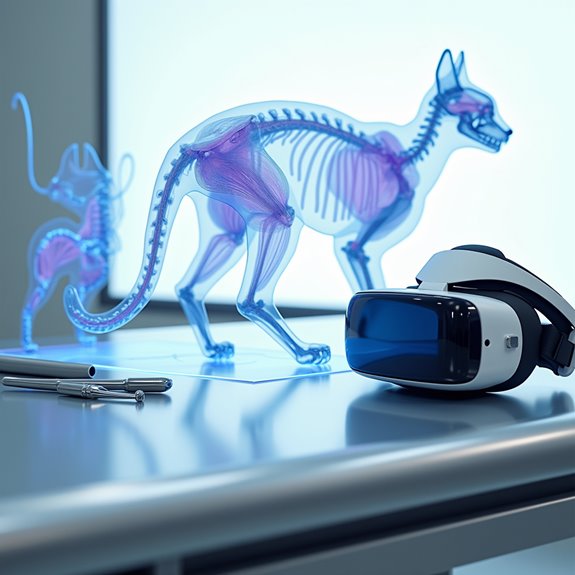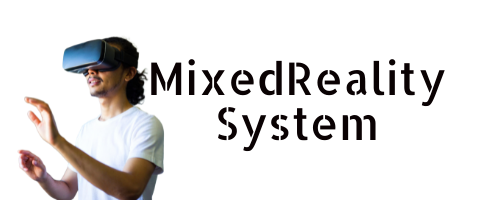Virtual reality is transforming how future veterinarians learn their craft, offering risk-free practice for everything from routine check-ups to complex surgeries. Students can now perfect their techniques without causing stress to real animals, while connecting with peers worldwide in virtual classrooms. Though VR can't replicate the warm fuzzy feeling of handling actual pets, it's proving invaluable for building confidence and skills. The future of veterinary education holds even more exciting technological innovations.

While veterinary students once had to rely solely on textbooks and hands-on practice with real animals, virtual reality is revolutionizing how future veterinarians learn their craft. These high-tech tools let students practice everything from routine check-ups to complex surgeries without the stress of working on actual pets, making those first real procedures much less nerve-wracking. It's like having a practice run before the big show, but without worrying about making mistakes that could harm a furry patient.
The beauty of VR training lies in its versatility and safety. Students can now practice rare procedures on exotic animals or rehearse emergency situations that might only happen once in a blue moon. Imagine getting to practice surgery on a tiger without actually needing a tiger! The American Veterinary Medical Association provided a significant grant in 2018 to advance these training capabilities. The USDA has successfully shifted to virtual training since the pandemic to ensure employee safety and flexibility.
Plus, these virtual sessions can connect students from different corners of the world, creating a collaborative learning environment that wouldn't be possible otherwise. The real-time feedback capabilities of VR systems allow students to immediately assess and improve their performance.
Virtual reality transforms veterinary education into a global classroom, breaking down geographical barriers and fostering worldwide collaboration among future animal doctors.
Of course, VR isn't perfect – sometimes the technology hiccups with glitches or lag, and there's no substitute for the real feel of handling living creatures. You can't quite replicate the warmth of a puppy's fur or the subtle signs of distress in a cat's behavior through a headset. That's why VR works best when paired with traditional training methods, creating a well-rounded learning experience.
Augmented reality is joining the party too, adding another layer to veterinary education. Students can now see 3D models of animal anatomy floating right before their eyes, making those complex textbook diagrams spring to life. It's like having X-ray vision that helps them understand what's happening inside their patients, with instant feedback to boot.
The impact on student performance has been impressive, with many reporting feeling more confident when they finally work with real animals. As technology continues to advance, these virtual training tools are becoming more sophisticated and realistic.
Who knows? Maybe soon we'll have perfect virtual simulations that feel just like the real thing – though nothing will ever fully replace the joy of helping actual animals get better.
Frequently Asked Questions
How Much Does VR Veterinary Training Equipment Typically Cost?
VR training equipment costs vary considerably, ranging from $50,000 to $1 million for extensive systems, including headsets ($400-$700) and specialized veterinary simulation software development.
Can VR Training Replace Hands-On Experience With Real Animals Completely?
Virtual reality cannot completely replace hands-on experience, as it lacks critical elements like emotional interactions, physical nuances, and unpredictable real-world scenarios essential for thorough veterinary skill development.
What Technical Skills Do Veterinary Students Need Before Starting VR Training?
Students require basic computer literacy, familiarity with digital interfaces, understanding of controller operations, and fundamental troubleshooting abilities. Prior experience with gaming systems can be advantageous.
Are There VR Simulations Available for Exotic and Wildlife Veterinary Procedures?
VR simulations for exotic and wildlife veterinary procedures are limited but emerging. Some facilities offer basic anatomical models and procedural training, though specialized scenarios are still under development.
How Long Does It Take to Master Veterinary Procedures Using VR Technology?
Mastering procedures typically requires 90 minutes of VR training sessions, though individual learning curves vary. Studies show comparable performance between VR-trained students and those using traditional methods.



Leave a Reply